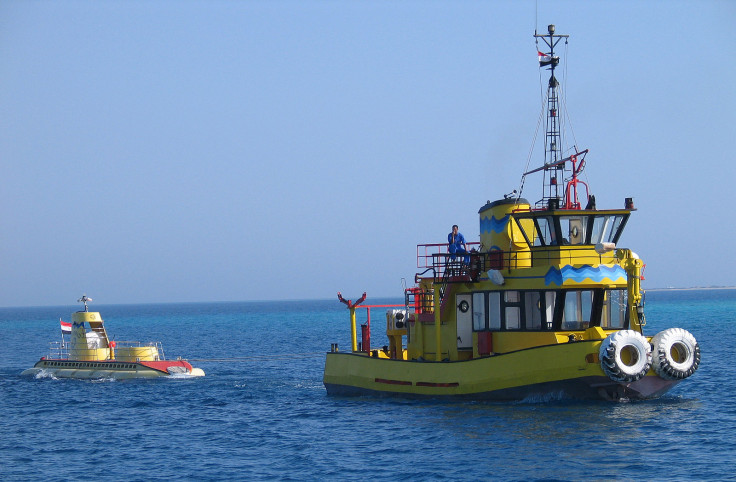Tourist Submarine Packed with Russian Visitors Sinks Near Popular Egyptian Resort
The Sinbad reportedly could travel depths of up to 72ft.

A tragic underwater disaster unfolded off the coast of Egypt on Thursday morning when a tourist submarine sank in the Red Sea, killing at least six passengers and injuring nine others, including four critically. The vessel, identified as the Sindbad, was carrying 44 people—among them children—on a sightseeing excursion near the popular resort city of Hurghada when it went down approximately one kilometre from the shore.
As authorities scramble to investigate the cause of the crash, this latest catastrophe has intensified scrutiny of Egypt's marine tourism sector, which has faced increasing criticism over inadequate safety measures following similar incidents in recent years.
Rescue Operations Launched After Red Sea Sinking
The Red Sea Security Directorate confirmed that the submersible sank off the coast of a yet-to-be-named hotel marina in Hurghada. Twenty-one ambulances were dispatched to the scene as emergency services rushed to recover survivors and transport the wounded to nearby hospitals, including Al-Kawthar.
While 29 people have been rescued so far, several passengers remain unaccounted for, and Egyptian authorities remain on high alert.
Unlike the tragic implosion of the OceanGate submersible in 2023, the Sindbad had operated successfully for several years, offering tourists panoramic views of Red Sea coral reefs and marine life.
What the Sindbad Tour Offered
The Sindbad, owned by Sharm Hurghada Excursions, was marketed as a safe and immersive three-hour submarine experience offering spectacular views of Egypt's coral reefs. Tickets cost £68 for adults and £35 for children, with the company boasting that the Sindbad is one of only 14 fully operational recreational submarines in the world.
Each passenger was allocated a round viewing window, with the vessel designed to reach depths of up to 72 feet below the surface.
All Victims Confirmed as Russian Nationals
According to a statement posted by the Russian Embassy in Egypt, all passengers onboard were Russian tourists, most of whom had booked through Biblio Globus Egypt Tours. The Embassy confirmed that four Russian nationals had died, several were missing, and others were recovering after being pulled from the water.
'The submersible carried out a regular underwater excursion with inspection of the coral reef,' the statement read. 'In addition to crew members, there were 45 tourists on board, including minors.' Russian diplomats have since arrived in Hurghada to assist with the aftermath.
Déjà Vu: Echoes of the Sea Story Disaster
This is not the first time Egypt's Red Sea tourism has faced catastrophe. On 25 November 2024, the Sea Story, a four-deck tourist yacht, capsized during rough weather near the popular diving reef of Shaab Satayah. The vessel was carrying over 40 people when it sank within minutes after being struck by a massive wave.
Eleven individuals were reported missing and presumed dead. Survivors recalled horrifying scenes of trapped passengers, screaming from locked cabins as water flooded in.
'I tried to swim to the surface, but the current was very strong and I felt like I was about to suffocate,' one British tourist told media outlets.
Despite rough weather being cited as the official cause, survivors believe the disaster was compounded by cost-cutting and subpar safety measures.
Survivors Reveal Safety Shortcomings
In a detailed account to Sky News, a diver named Timothy who survived the Sea Story tragedy revealed shocking negligence. Passengers received no safety briefing, were unaware of where life rafts were located, and weren't shown how to open emergency hatches. One couple had to share a single life jacket, and staff allegedly told them not to worry because 'plenty' were kept in the crew quarters.
Timothy noted, 'There was no emergency drill at all... It turns out that wasn't the case [that life jackets were in every cabin].'
He also claimed to have seen staff smoking cigarettes near compressed oxygen tanks—highlighting a glaring disregard for basic safety protocols. 'You know, risk of a massive explosion,' he said.
Another diver, James, added: 'Safety didn't feel paramount. It didn't feel like it was the most important thing to Dive Pro, operating the Sea Pearl.'
Mounting Pressure on Egyptian Authorities
With another tragedy now unfolding less than six months later, Egyptian officials are under growing pressure to reform and enforce marine safety regulations. Though weather conditions were not initially cited in the Sindbad incident, comparisons to the Sea Story capsizing have reignited fears that systemic failures continue to plague Egypt's tourism infrastructure.
Industry critics argue that repeated tragedies indicate more than just bad luck—they suggest chronic lapses in enforcement, profit-driven shortcuts, and a dangerously lax safety culture.
As investigations into the Sindbad's sinking continue, there are renewed calls for robust oversight and comprehensive audits of tour operators. Without urgent reforms, these 'dream' underwater excursions may continue to come with deadly risks.
© Copyright IBTimes 2025. All rights reserved.






















